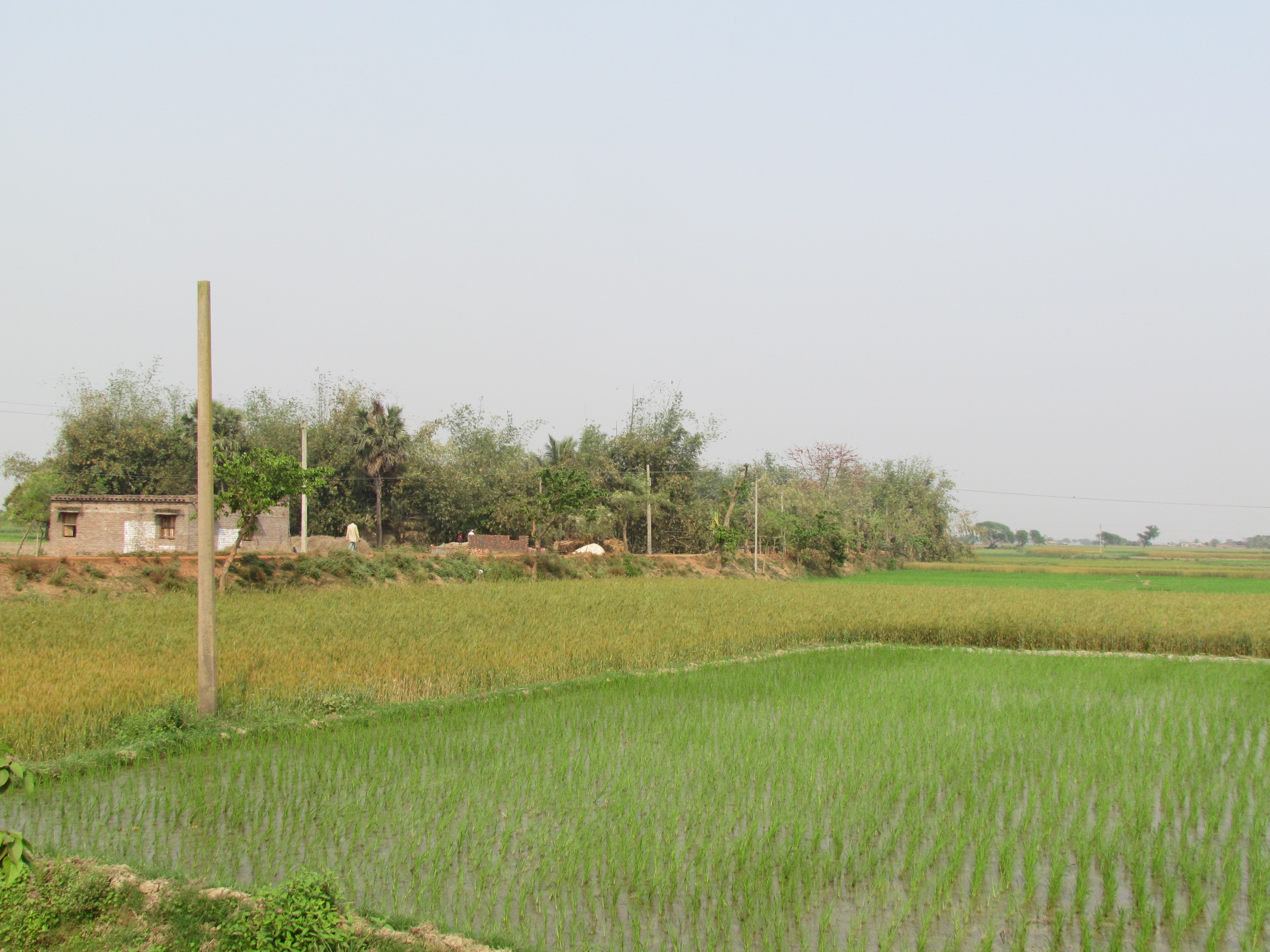By Somnath Mukherji,
As we stood talking to a woman in the village of Madanpur in Murshidabad, her 6 or 7 year old girl used her body weight to pump water out of the handpump and drank from a bowl.
Why have you come here?” a man rushed towards us.
“We are trying to understand the issue and see what we can do,” we explained.
“If you cannot do anything and have come here to do a study or take pictures, it is better you leave now! This has been happening for the last 25 years, we are not going to allow it anymore.”

Village of Madanpur from a distance
My instincts were urging me to run and stop the little girl from drinking the water poisoned by Arsenic which AID Kolkata volunteers had tested to be 200 times more than the WHO permissible limit of 0.02 mg/litre. But, what alternatives did she have? Her father had died at a relatively young age just 22 days ago drinking this same water. Guessing the age of an adult here is futile and fraught with pain.
The man washed the mud off his hands and feet and asked us to run our fingers over his palms to feel the hard bumps – a tell tale sign of long term arsenic poisoning. The toughness of his palms were unmatched by his sunken eyes and chest. His hair looked like a wig and there was heavy pigmentation of his skin.
Like this man, we met many others in this village of Madanpur who were angry. Angry to be left to die; angry at being given false promises; angry to be drinking poisoned water and not being able to change things for their children; angry at seeing family after family dying a slow death and above all angry at being used as samples for studies, papers and news stories.
As we made our way to talk to others in the village, a man started making his way towards us. He stopped after every few steps. Arsenic is known to cause lung obstruction and that is what he was battling as he stopped to catch his breath.
When we sat to talk to many others in the village center, we found out that government had come a few years ago and sealed off the handpumps. A few months later there was a huge fire in the village which killed one person and cattle and destroyed several homes because people could not get water. The government reopened the handpumps.
“We have been marked by death,” one of the person said in the village meeting. “We are not worried about ourselves, we are walking skeletons. We want our children to live well.”
What can be done? Small solutions for big problems
Poverty and arsenic have made a deadly concoction in the village of Madanpur compounded by official and societal apathy. A pipeline runs half a kilometer outside the village and no one in the village knows who is responsible for it. They are ready to walk the distance to carry water back if they knew when the water actually trickles out of it.
We all decided that we would approach the issue humbly and start with small solutions. Although arsenic poisoning affects millions of people in West Bengal, no good sturdy solution exists which can run without regular maintenance. But an easy good solution is to keep water overnight with Alum which precipitates arsenic along with iron. We have consulted a few experts and they seem to agree on this. Additionally, we will try to encourage organic kitchen garden around each house to make balanced nutrition readily available to the children. Along with our partners Samaj Kalyan O Mahila Unnayan Kendra (SKMUK) in Murshidabad we requested a young woman to take up the work of organizing and mobilizing the villagers so that the small advantages of using Alum and nutrition gardens can be discussed, understood and practiced with some support. Another friend in SKMUK will work regularly to interface with the government. We will also try to harvest rainwater in the monsoon months so that the people can drink arsenic free water for a few months. And if slowly some other solutions emerge the volunteers and villagers will try to adopt them, but will not wait for it.

Tell tale sign of arsenic poisoning.
In parallel, our friends in SKMUK will talk to the Public Health Engineering department to find out more about the pipeline. We hope that in future the villagers themselves will be able to put their demands in front of the appropriate officials.
Small solutions will allow people to take charge of their lives without having to wait for something big to happen – at least nothing like this has happened in the last 25 years. We are hopeful but will have to see a few months from now.
If you want to join hands with the villagers of Madanpur let me know.
—
(Somnath Mukherji is a volunteer with Association for India’s Development (AID). Read more of his posts at https://grambashi.wordpress.com)
(Photos credit: grambashi.wordpress.com/)

